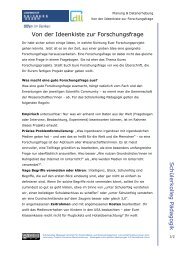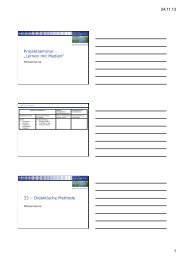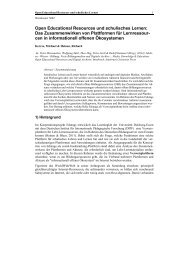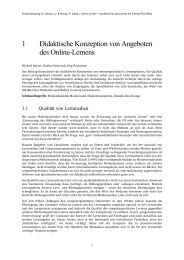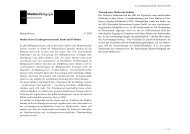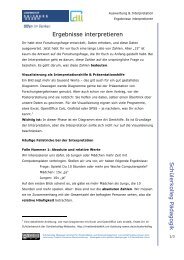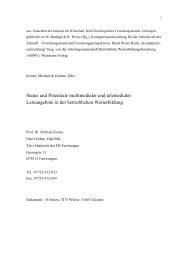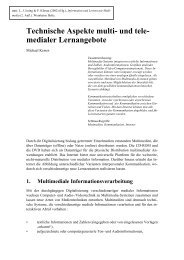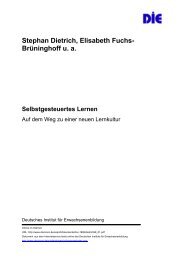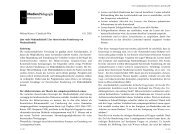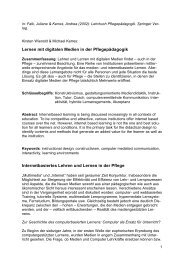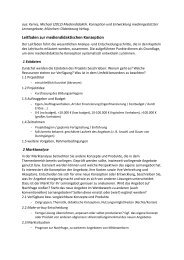Bloom's Digital Taxonomy - Educational Origami - Wikispaces
Bloom's Digital Taxonomy - Educational Origami - Wikispaces
Bloom's Digital Taxonomy - Educational Origami - Wikispaces
Create successful ePaper yourself
Turn your PDF publications into a flip-book with our unique Google optimized e-Paper software.
Validating Information Rubric<br />
<strong>Bloom's</strong> Taxonomic Level:<br />
Evaluating<br />
Key Words:<br />
Checking, critiquing, judging, reviewing, posting, moderating, reflecting, Validating.<br />
Introduction:<br />
This is a rubric for validating information sources. This is the process of referencing and<br />
authenticating data from multiple valid sources. With the emergence of Web 2.0<br />
Technologies anyone can publish anything in formats that appear valid. Key elements of<br />
validating the information is reporting the information source, accessing multiple<br />
information sources and information type, creating linkage between the information<br />
sources and making decisions on the validity of information based on this process.<br />
Validating Information<br />
1 Information is gathered from a single source or from<br />
undisclosed sources. There has been no attempt to<br />
evaluate the accuracy of the information. Information<br />
is taken at face value.<br />
2 Information is gathered from several sources. The<br />
information is gathered from a single information type.<br />
There is limited linkage of information to validate.<br />
The student makes no or limited judgements on the<br />
validity of the information.<br />
3 Information is gathered from several sources (3-4) and<br />
information types (2-3).<br />
There is linkage of information to validate the<br />
accuracy of the material. Several of the information<br />
sources are regarded as of high validity for example<br />
government and education websites, encyclopaedia,<br />
professional journals, primary information sources etc.<br />
The student makes some judgements on the validity<br />
of the information.<br />
4 Information is gathered from many sources (4 or<br />
more) and information types (3 or more).<br />
There is linkage of information to validate the<br />
accuracy of the material. Most of the information<br />
sources are regarded as of high validity for example<br />
government and education websites, encyclopaedia,<br />
professional journals, primary information sources etc.<br />
The student makes valid and supported judgements<br />
on the validity and accuracy of the information.<br />
Referencing & Bibliography<br />
No bibliography is provided.<br />
Students provide the URL of the websites<br />
visited or title of the printed resource.<br />
There is an attempt to organise the<br />
bibliography entries.<br />
Students provide the some of the key<br />
information for both electronic and printed<br />
media. This would include some of the<br />
following: URL of the websites visited, title,<br />
Author, Publisher and or Date of<br />
publication.<br />
Students attempt to use a recognised<br />
bibliography format such as APA or MPA.<br />
Bibliography entries show some<br />
organisation and there is some<br />
referencing throughout the document.<br />
Students provide the key information for<br />
both electronic and printed media. This<br />
would include most of the following: URL of<br />
the websites visited, title, Author, Publisher<br />
and or Date of publication/last modification,<br />
ISBN Number, Journal title etc.<br />
Students use a recognised bibliography<br />
format such as APA or MPA.<br />
Bibliography entries are suitably organised<br />
and referenced throughout the document.<br />
Andrew Churches 58 01/04/09



